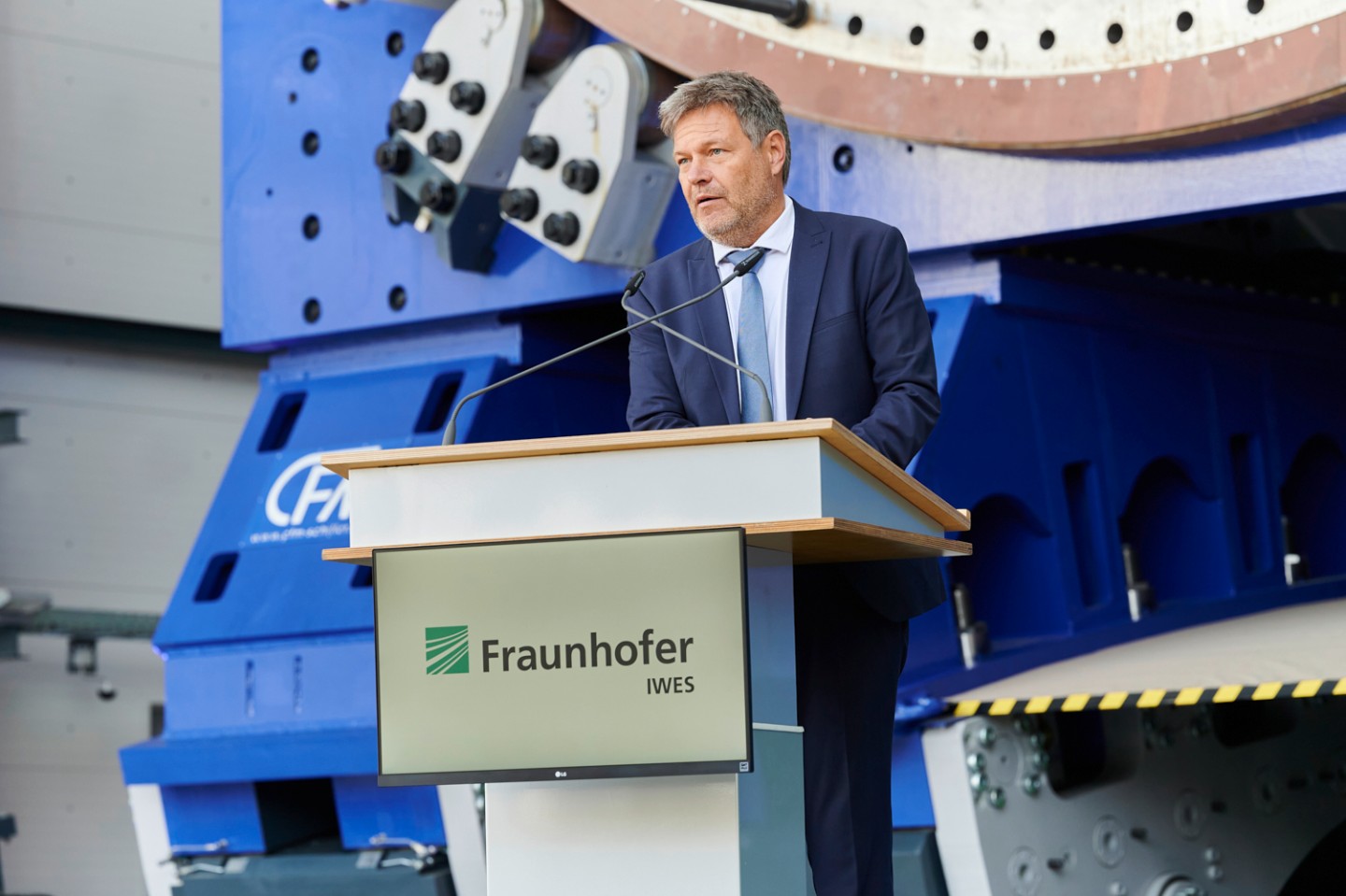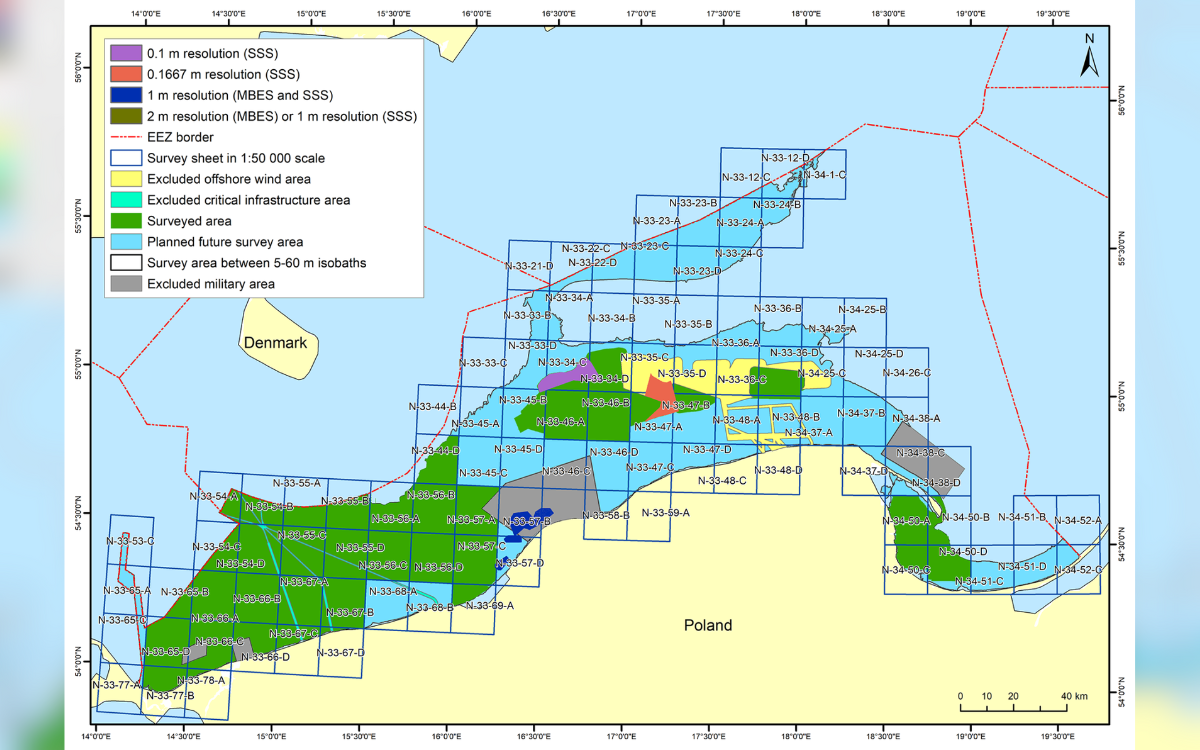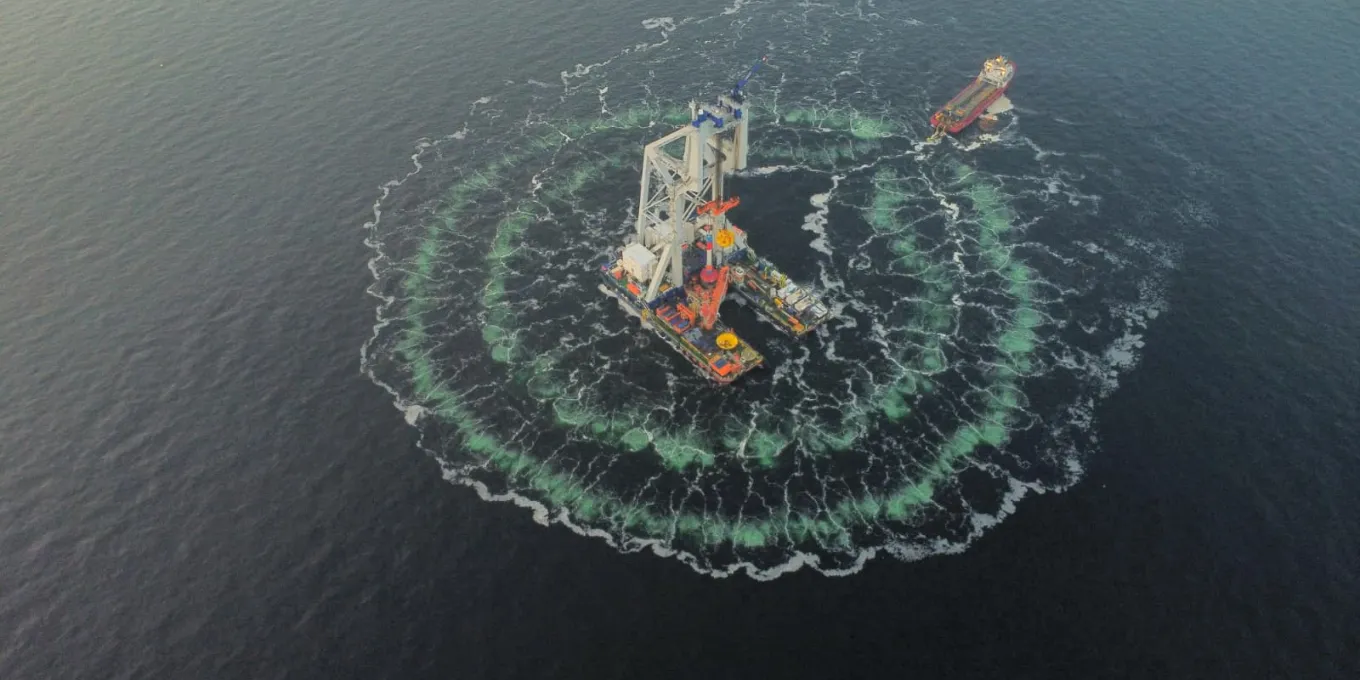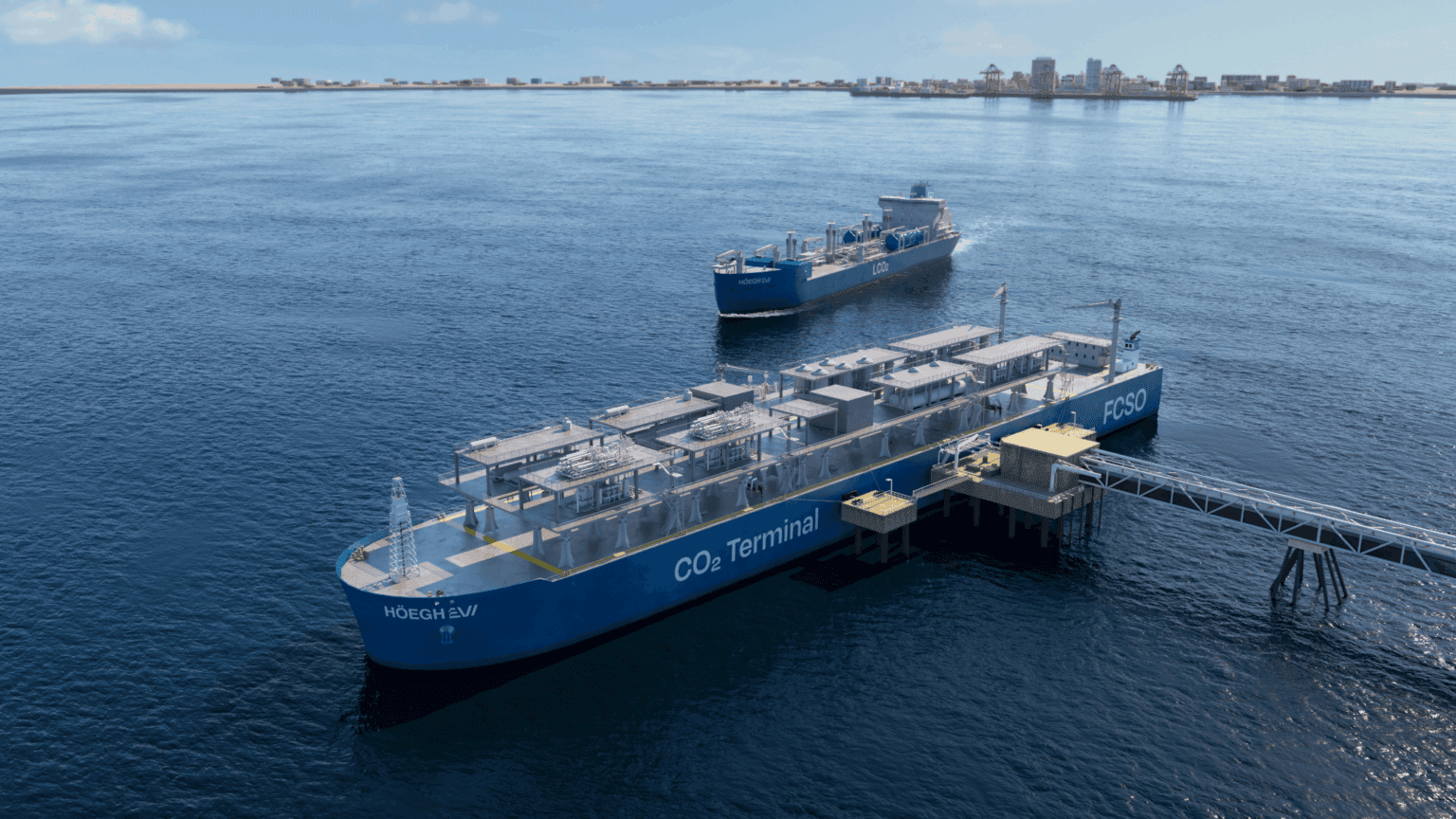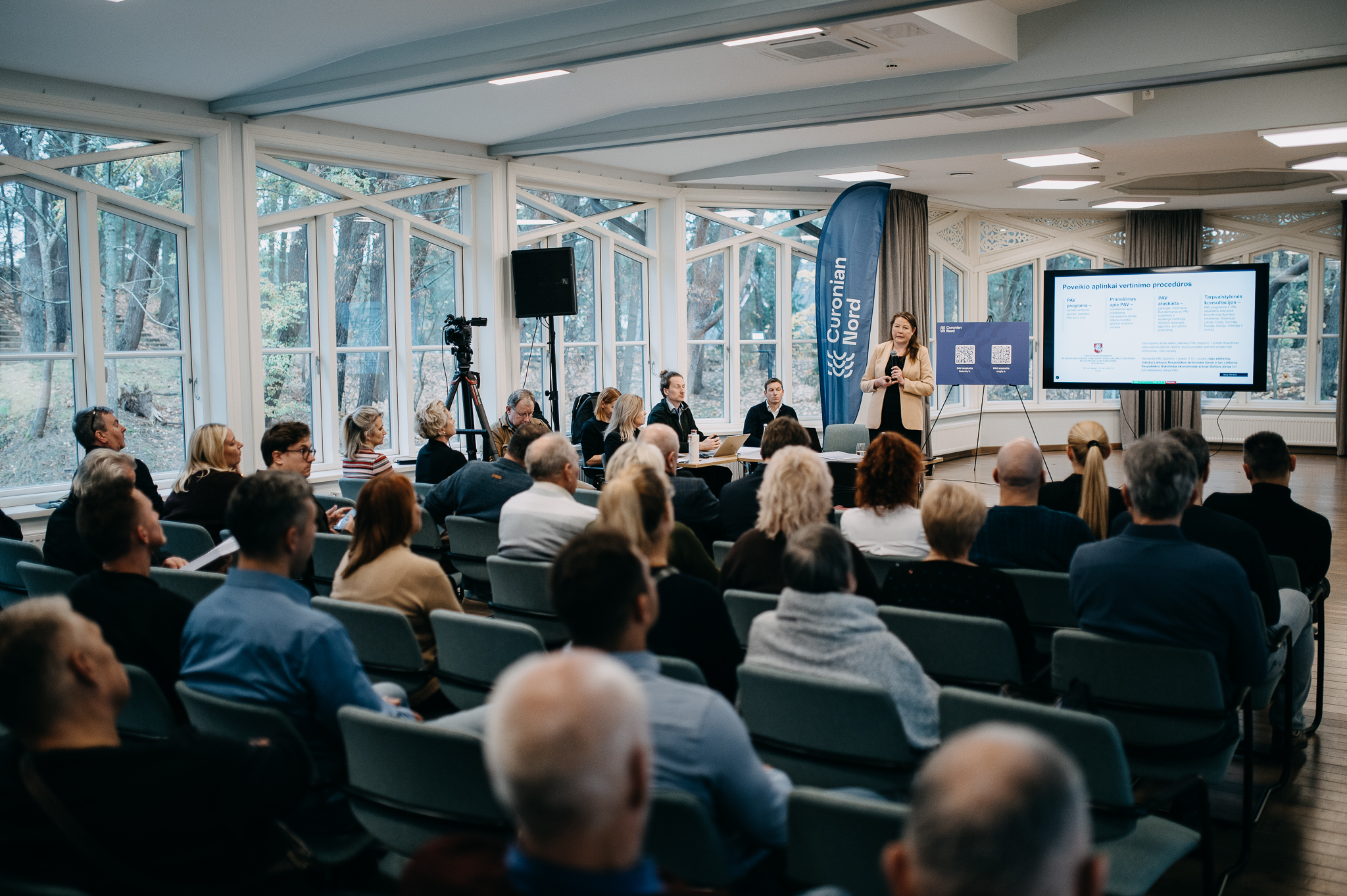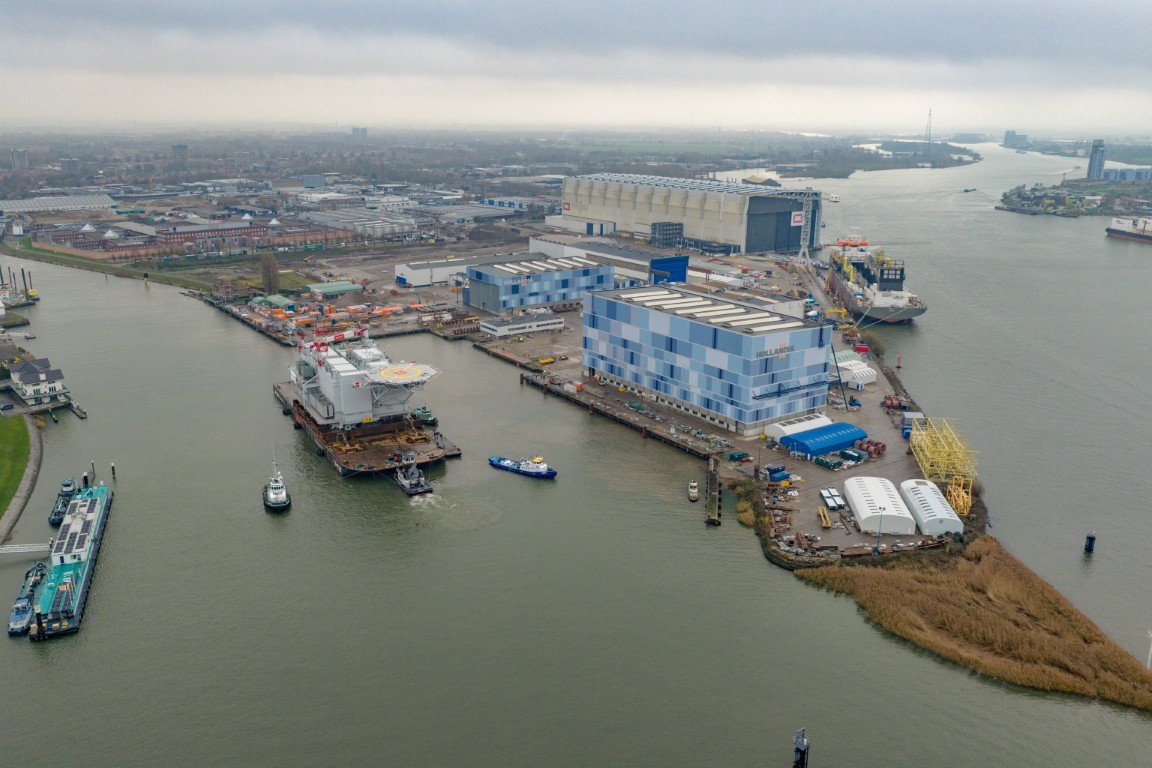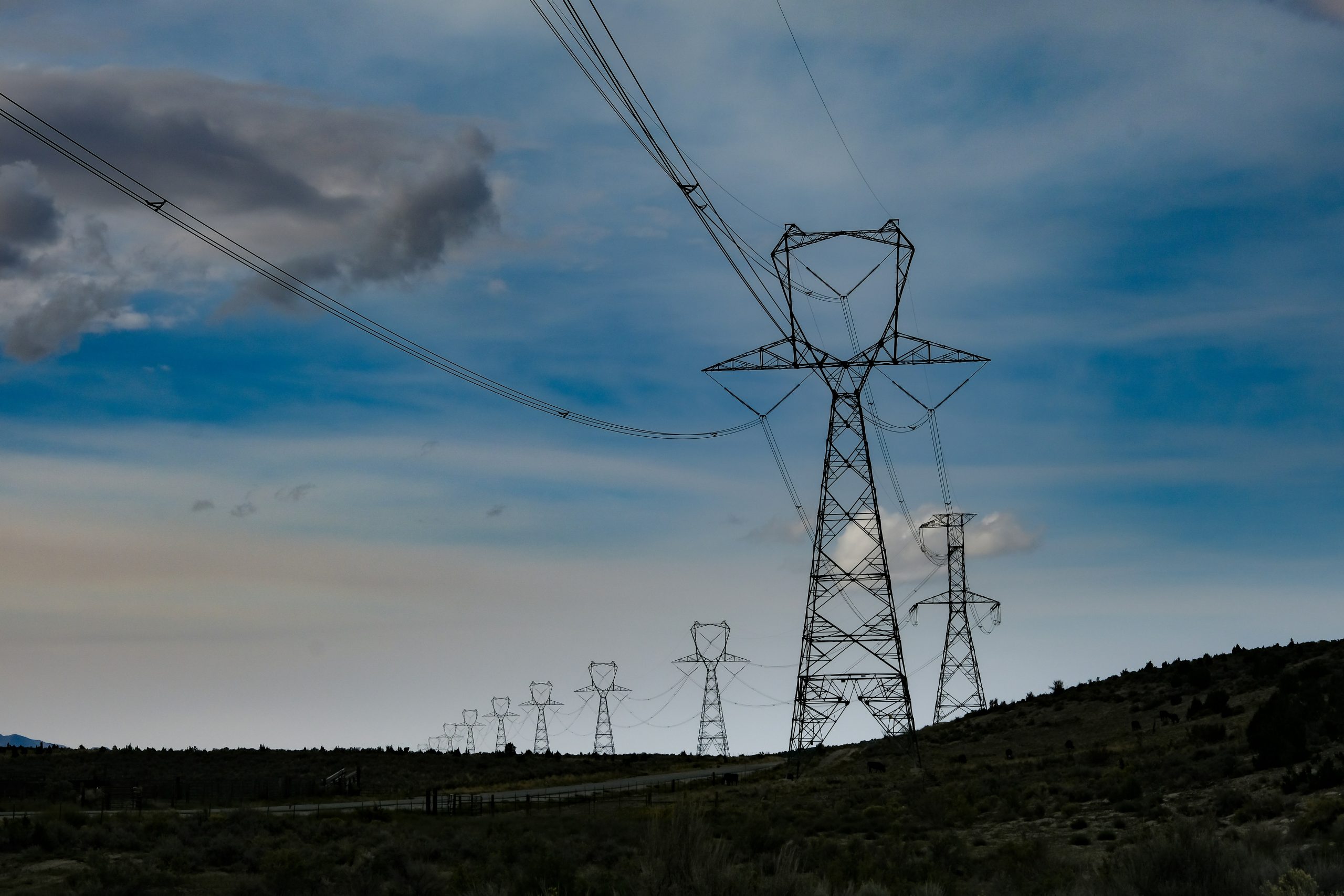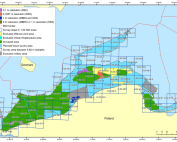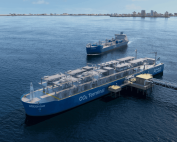The Federal Minister for Economic Affairs and Climate Action, Robert Habeck, the President of the Senate and Mayor of the Free Hanseatic City of Bremen, Andreas Bovenschulte, and the Senator for Science and Ports of the Free Hanseatic City of Bremen, Claudia Schilling, met in Bremerhaven today to inaugurate the Fraunhofer Institute for Wind Energy Systems IWES’ new 115m+ rotor blade test rig. The new rotor blade test rig, the first of its kind in the world, offers comprehensive testing possibilities for rotor blades measuring longer than 115 meters. The construction of the test rig was financed by the German Federal Ministry for Economic Affairs and Climate Action (BMWK) to the tune of around €18 million, with additional funding of around €5 million coming from the German Federal Ministry of Education and Research (BMBF), the State of Bremen, and the European Regional Development Fund (ERDF).
Testing next-generation rotor blades
With a length of more than 120 meters, rotor blades are decisive for the performance, reliability, and cost-efficiency of wind turbines. The investments made in assuring the quality of rotor blade development are therefore essential. With the new rotor blade test rig, Fraunhofer IWES is expanding its test portfolio and adapting to the latest requirements of wind turbine component manufacturers, thus securing the close collaboration between applied research and industry. Innovative concepts for rotor blades and rotor blade components alike can undergo multifaceted testing at IWES before entering series production. In the whole world, this is only possible on this grand scale at Fraunhofer IWES’ new 115m+ rotor blade test rig.
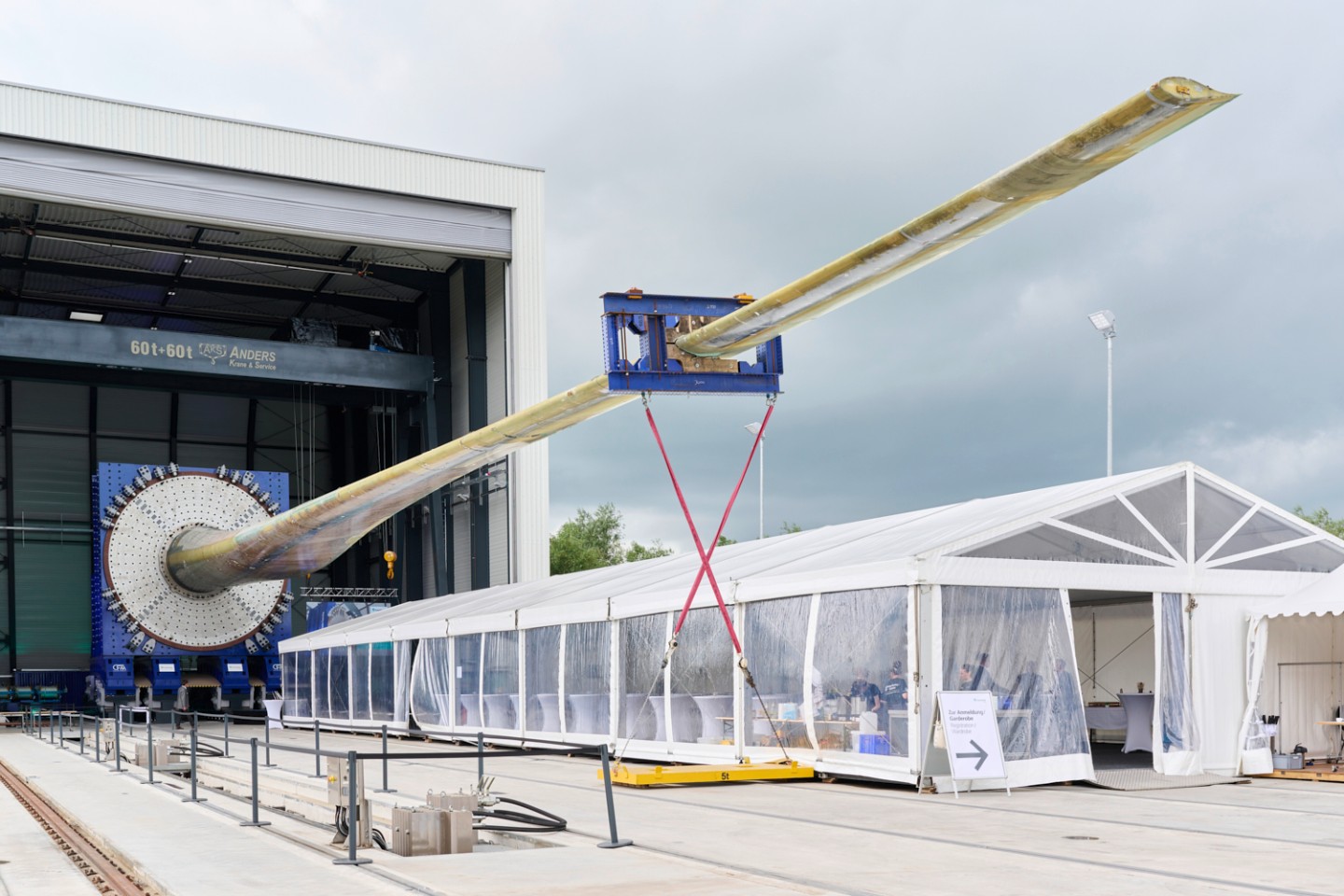
Photo: Hauke Müller
The Federal Minister for Economic Affairs and Climate Action, Robert Habeck, said: Wind energy is a central source of electricity in Germany. Expanding the use of wind energy in an efficient and cost-optimized manner is essential to meeting the growing demand for green electricity in the future. Research and development are elementary components of the path ahead: innovations and optimizations ensure further cost reductions, and further developments help make it possible to use the available space on land and at sea as efficiently as possible. Testing possibilities for innovative plant developments are of central importance for the implementation of the energy transition and for Germany as a business location. Fraunhofer IWES is making an important contribution with its work and the new test rig here. Public investment in the research and development of wind energy will pay off double in the future, which is why we must keep up our efforts in this area.
IWES and the expertise of its employees have played a great role in enabling Bremen and, in particular, Bremerhaven to reestablish themselves as wind energy locations. That is good for jobs and good for the energy transition. For this reason, it is right and important that we invest enormously in research and development in Germany. Our goal must be to reduce the costs for renewable energy production even further and utilize innovative technologies for the energy transition, added Mayor Andreas Bovenschulte.
Senator Claudia Schilling continued: Wind energy research at IWES is not only of great significance for the energy transition in Germany, but also important for strengthening the industry in Bremerhaven. Investments in research projects also create jobs and bolster value creation in the region. They boost Bremerhaven’s attractiveness as a research location and are important drivers for long-term economic growth in Bremerhaven.
Prof. Axel Müller-Groeling, Executive Vice President for Research Infrastructures and Digital Transformation at the Fraunhofer-Gesellschaft, explained on the occasion of the inauguration: Fraunhofer scientists are conducting intensive research to drive forward the transformation of our energy sector towards a sustainable future independent of fossil fuels. The short- and medium-term expansion and the consistent further development of wind energy is set to play a decisive role in this. Fraunhofer IWES’ new test rig will make an important contribution to further optimizing the efficient utilization of wind energy and, in doing so, reinforce Germany’s position as a leading business location for climate-friendly technologies.
The pace in the technology development and optimization of rotor blades is rapid, but they are being implemented faster elsewhere. We must now ensure that the wind energy industry is equipped as well as possible to implement the offshore expansion goals. Our scientists are making an important contribution to this by applying scientific methodological expertise and creating a suitable test environment to get large-scale production in the industry up and running. Research is an essential step on the journey to a climate-neutral future and still relies on stable funding – including from grants, said Prof. Andreas Reuter, Managing Director of Fraunhofer IWES.
The new 115m+ rotor blade test rig’s test methods
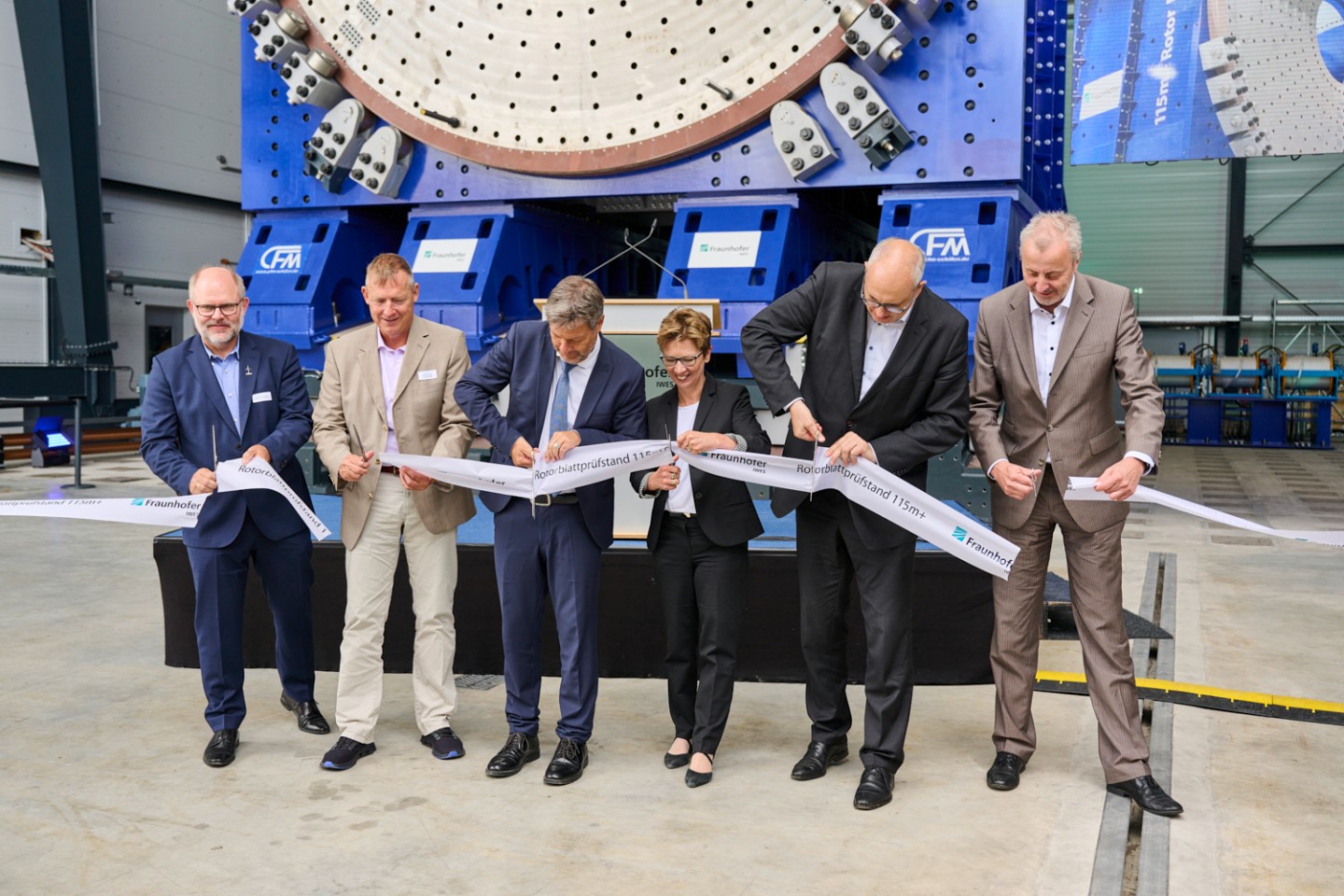
Ceremonial inauguration of the new 115m+ Rotor Blade Test Rig (from left): Christian Fenselau, Vestas, Prof. Andreas Reuter, Institute Director Fraunhofer IWES, Robert Habeck, Federal Minister for Economic Affairs and Climate Protection, Senator Claudia Schilling, Mayor Andreas Bovenschulte, Hans-Otto Feldhütter, Fraunhofer-Gesellschaft; Photo: Hauke Müller
The state-of-the-art test rig offers comprehensive testing possibilities for rotor blades with a length of more than 115 meters. These blade lengths are being specially developed for offshore wind turbines. In addition to biaxial full-scale blade tests, manufacturers also have the option of testing individual segments of a rotor blade. The modular and adaptable design of the test rig allows the scientists at Fraunhofer IWES to react flexibly to requirements and further develop intelligent test methods. Conventional test methods are combined with new approaches. In addition, it is possible to test the entire material behaviour of the rotor blades. With the help of segmented and sequential tests, a rotor blade can be divided into suitable segments, which can be optimized and tested one after the other. The entire test rig can also be mapped virtually, thus opening up testing possibilities for a wide range of other innovative, digital testing methods.
The development of our new wind turbines is an important step on the way to achieving the ambitious expansion goals for wind energy. We are looking forward to conducting the rotor blade test we need for our V236-15.0 MW™ prototype with a rotor diameter of 236 meters together with Fraunhofer IWES with the aim of being able to start the serial production planned for 2024 assuredly, said Christian Fenselau, Chief Specialist Test and Validation at Vestas Wind Systems A/S.
Steffen Czichon, Head of Department Rotor Blades at Fraunhofer IWES, emphasized: Here in Bremerhaven, we can look back on experience from more than 40 test campaigns conducted over the last ten years. With our competence, we are contributing to rotor blades being able to be operated reliably throughout their entire lifespan of more than 20 years. The new test rig is expanding the existing test infrastructure and opening up new possibilities with which we can keep up with the growth in the size of wind turbines. IWES has developed a biaxial test setup which enables synchronized excitation in flap- and edgewise direction. This achieves reproducible results, and the test time can be considerably shortened. We are very proud of our new test rig and, at the same time, motivated to improve the test methods continuously.
With the new test rig, IWES is now operating a total of three test facilities for rotor blades, all located at easily accessible sites on the German coast with open sea access for transport. In addition, there is also a laboratory accredited in accordance with DIN EN ISO / IEC 17025 for IEC 61400-23 certifications as well as a recognized IECRE testing laboratory.
Source: Fraunhofer IWES
